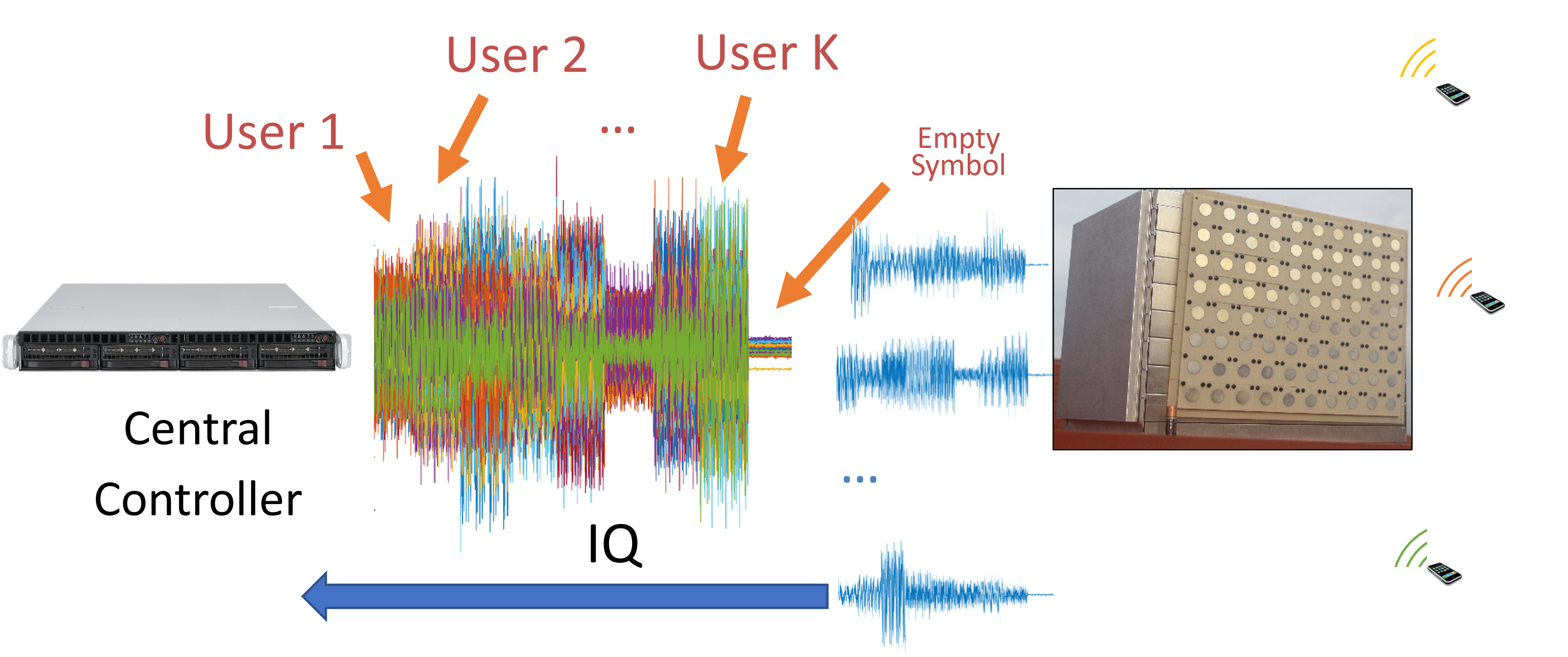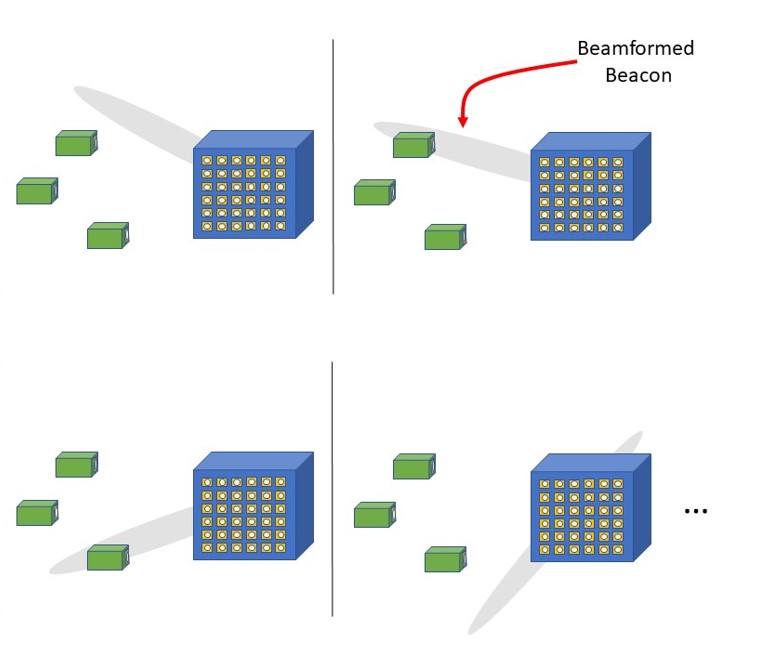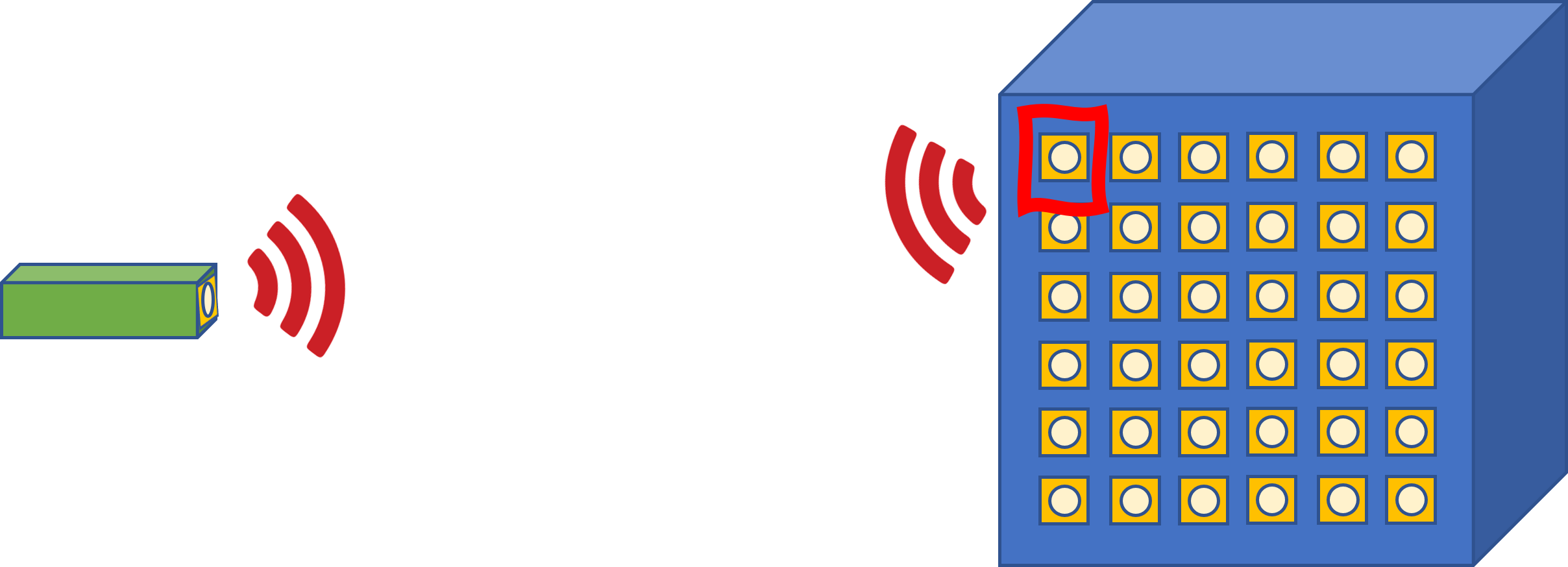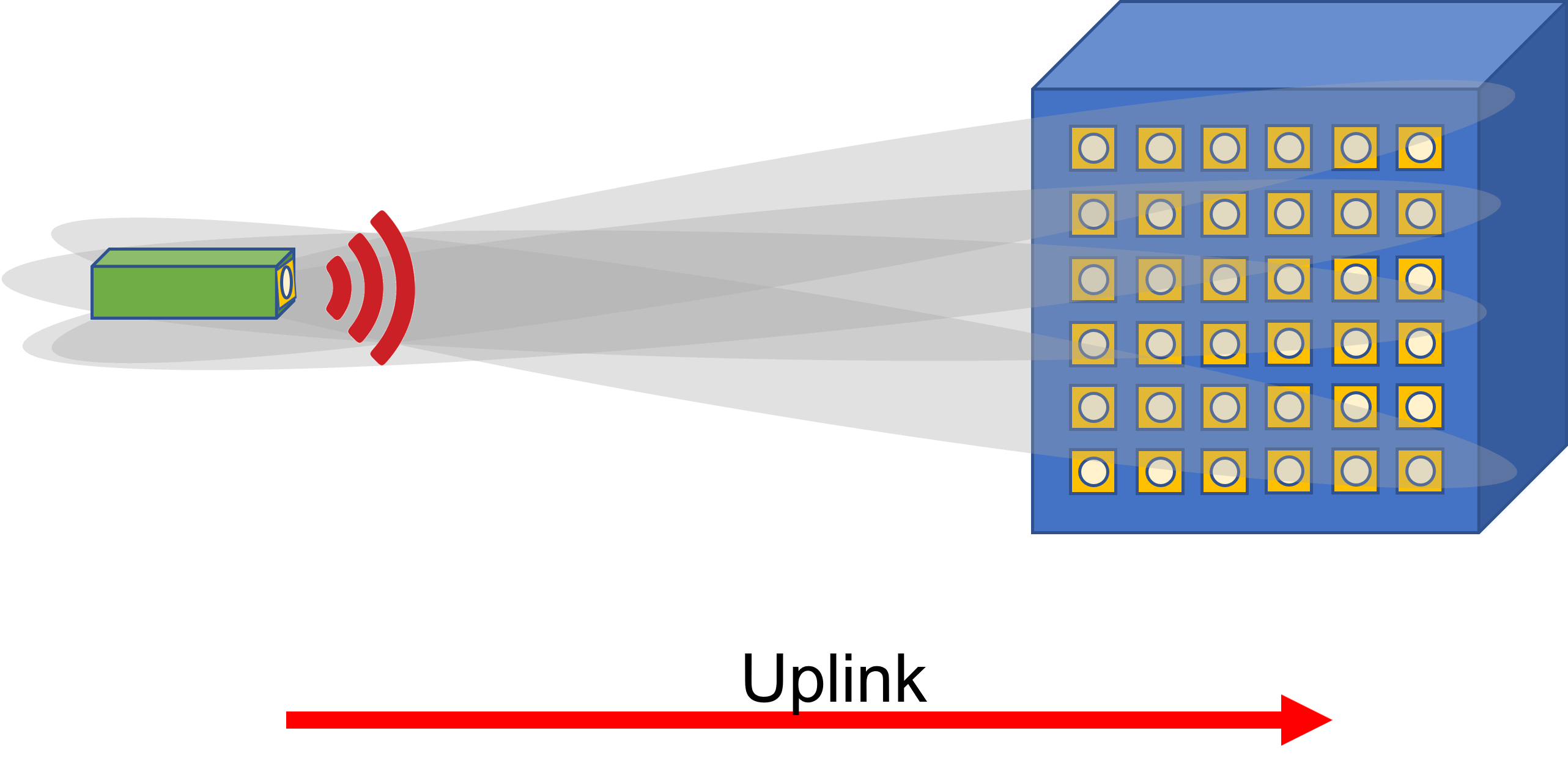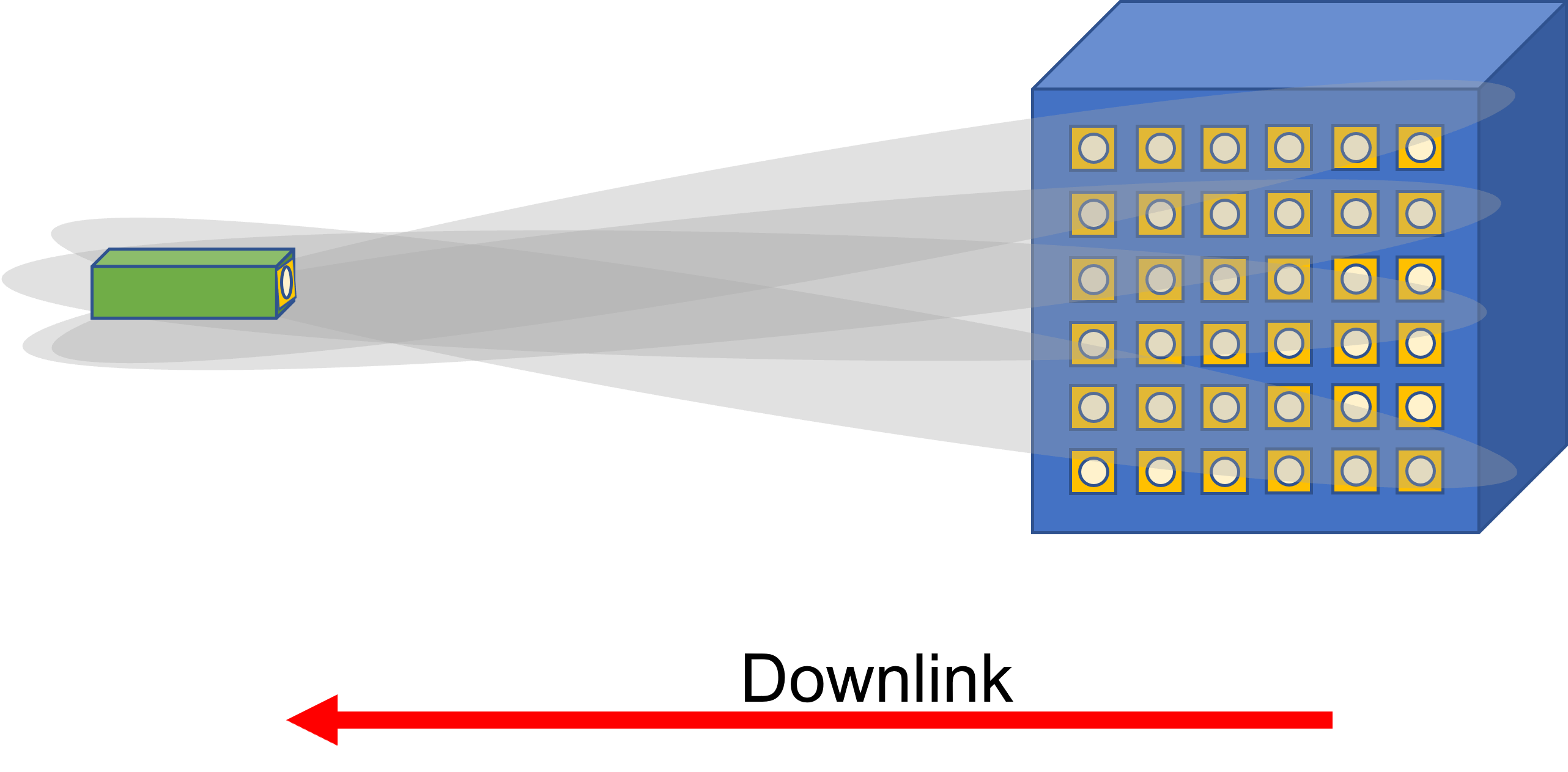RENEW Experiments
Channel Sounding
The Sounder is a C++ based framework that allows users to configure RENEW clients to transmit uplink pilots and user-defined data signals to the base station and to record the received signals from all base station antennas to HDF5 datasets in real-time. The pilot signals are transmitted in a time-orthogonal fashion from each configured client and uplink signals are sent at common subframes by all clients. These pilot and data signals are recorded as multi-dimensional matrices in separate datasets in the HDF5 file. Dataset analysis tools are developed in Python3 that enables plotting of signals at various dimensions and calculation of various statistics of the massive MIMO channel as well as offline demultiplexing of the uplink signals.
View ProjectBeamsweeping
We provide a script that allows users to generate a beacon that is precoded using Hadamard codes. This results in a beamsweep of beacons across space. Beacon can only be generated by base station boards (not clients). The beamsweep script we provide deals only with the transmitter side. In other words, the script generates and transmits the beacons. A receiver script (e.g., our SISO_RX.py) can then be used on a nearby device (e.g., client) to capture the beamsweeped beacons.
View ProjectSingle-Input Single-Output (SISO)
Multiple iterations of a single-shot transmissions from one client or UE to one base station radio (UE stands for User Equipment). The script explores Bit Error Rate (BER) as a function of Signal-to-Noise Ratio (SNR) and therefore iterates over different SNR values. Within each iteration, only a single frame transmission takes place. We define two modes: OTA (Over-the-air) and SIM_MOD (simulation). In simulation mode we simply use a Rayleigh channel whereas the OTA mode relies on the Iris hardware for transmission and reception. In both cases the client transmits an OFDM signal that resembles a typical 802.11 WLAN waveform. If the transmission is OTA, then the user specifies a schedule that tells the client when to transmit its frame. The base station initiates the schedule by sending a beacon signal that synchronizes the client. After that, the client will simply transmit its frame.
View ProjectUplink mMIMO Single-User
Multiple iterations of a single-shot transmissions from one client or UE to N_BS_NODE base station radios (UE stands for User Equipment). The script explores Bit Error Rate (BER) as a function of Signal-to-Noise Ratio (SNR) and therefore iterates over different SNR values. Within each iteration, only a single frame transmission takes place. We define two modes: OTA (Over-the-air) and SIM_MOD (simulation). In simulation mode we simply use a AWGN channel whereas the OTA mode relies on the Iris hardware for transmission and reception. In both cases the client transmits an OFDM signal that resembles a typical 802.11 WLAN waveform. If the transmission is OTA, then the user specifies a schedule that tells the client when to transmit its frame. The base station initiates the schedule by sending a beacon signal that synchronizes the client. After that, the client will simply transmit its frame.
View ProjectUplink mMIMO Multi-User
Single-shot transmission from N_UE clients to N_BS_NODE base station radios (UE stands for User Equipment). We define two modes: OTA (Over-the-air) and SIM_MOD (simulation). In simulation mode we simply use a Rayleigh channel whereas the OTA mode relies on the Iris hardware for transmission and reception. In both cases the clients transmit an OFDM signal that resembles a typical 802.11 WLAN waveform. If the transmission is OTA, then the user specifies a schedule that tells all clients when to transmit their frame. The base station initiates the schedule by sending a beacon signal that synchronizes clients. After that, all clients will transmit simultaneously. We implement a frame structure that allows the base station to capture clean (non-overlapping) training sequences for equalization and demultiplexing of the concurrent data streams.
View ProjectDownlink mMIMO Single-User
Single-shot transmission from N_BS_NODE base station radios to a single UE or client (UE stands for User Equipment). We define two modes: OTA (Over-the-air) and SIM_MOD (simulation). In simulation mode we simply use a Rayleigh channel whereas the OTA mode relies on the Iris hardware for transmission and reception. In both cases the clients transmit an OFDM signal that resembles a typical 802.11 WLAN waveform. If the transmission is OTA, then the user specifies a set of schedules that tell all clients and base station boards when to transmit their frames. Unlike the other demo scripts, this one defines three different schedules: 1.- Calibration: The first step is to perform reciprocity calibration 2.- Uplink pilots: The base station initiates the schedule by sending a beacon signal that synchronizes clients. After that, the client will transmit its pilot signal. This pilot will be used by the base station to compute the downlink beamforming weights. 3.- Downlink data: Using the beamforming weights, the base station precodes the data for the user and triggers a downlink beamformed transmission.
View Project